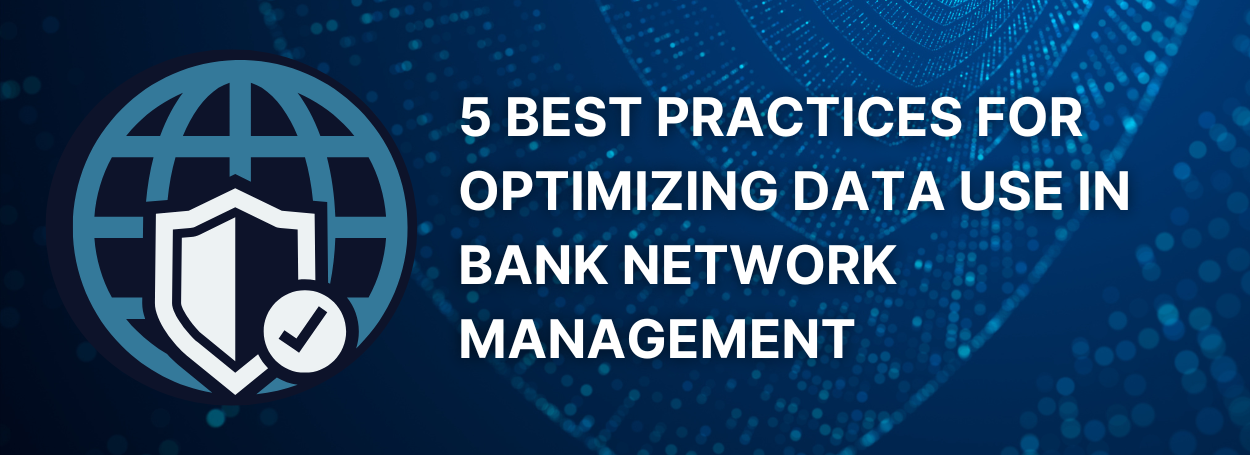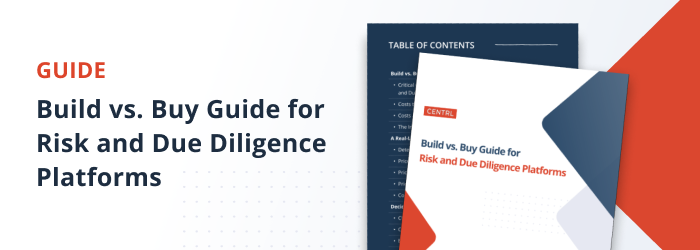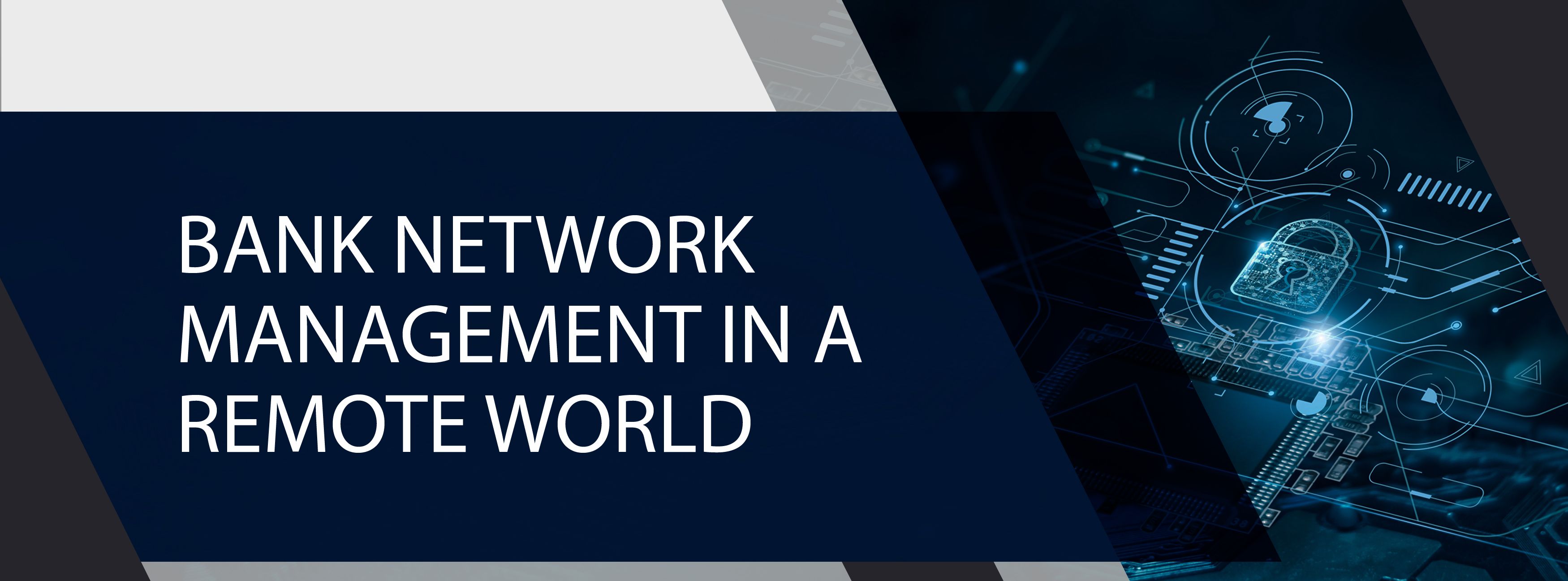5 Best Practices for Optimizing Data Use in Bank Network Management

“Information is the oil of the 21st century, and analytics is the combustion engine.” –Peter Sondergaard, Gartner Research
Data is one of the most valuable assets a financial institution (e.g., a bank) has at its disposal. But most financial organizations struggle to make the best use of it. Bank network managers play a crucial role in addressing these challenges.
In the past, network managers were primarily responsible for managing risk and costs, assessing capabilities, selecting and managing agents, and ensuring regulatory and financial crime compliance. But in the post-financial crisis and post-COVID world, they also function as:
- Internal coordinators
- Knowledge providers
- Partnership managers
- Drivers of new technology-enabled solutions
And perhaps most importantly, they will also play the role of data aggregators and integrators. But to successfully meet this responsibility, they must be aware of the best practices for data management in bank network management.
Why Is Data the New Oil for Financial Institutions?
When properly managed and contextualized, data becomes information that’s essential to many functions, including:
- Risk identification, mitigation, and management
- Regulatory compliance
- Liquidity management
- Client money protection
- Anti-money laundering (AML)
As regulators increasingly focus on banks’ AML, liquidity management, and client money protection functions, banks need the right kinds of control and support. For this, they must properly utilize the available data.
The effective use and analysis of data can also help them:
- Increase operational efficiency
- Increase transparency and accountability
- Take appropriate measures to prevent errors and lower costs
- Make better decisions
- Meet customers’ demands for digitized solutions, personalized services, and 24/7 availability
As stated earlier, the role of bank network managers has broadened. For one, they must collaborate with global banking, markets, securities services, cash management, and many other areas inside the organization.
Bank network managers also help coordinate activities between various business functions, such as operations, legal, regulatory compliance, IT and cybersecurity, credit, and risk management across banks that use external and internal agents.
To successfully meet all these new responsibilities, they’re now in charge of knowledge dissemination, data aggregation, and data integration.
The Challenges of Data Collection and Management for Financial Institutions
For most financial institutions, the biggest challenge is not the availability of data but the availability of refined, useful data. There are many reasons for this.
For one, data comes from multiple sources and counterparties, including agents, market infrastructures, technology providers, regulators, CCPs, (I)CSDs, etc. Secondly, it is often delivered in various, inconsistent, and fragmented formats. Third, it is often not appropriately structured, framed logically, or presented in a sensible, coherent, easy-to-understand manner.
These issues make it difficult to process this data and information, extract value from it, and ultimately use it as the basis for informed decision-making.
Strategies to Optimize Data Management for Bank Network Management
As data sources increase and data volumes grow, the chances of fragmentation, inconsistencies, and errors also increase. These issues will prevent banks from leveraging data to streamline operations, accelerate innovation, and boost their competitive posture.
Below are data management strategies that can help address these challenges:
Get Complete Visibility into All Agents
Network managers need to meet their new responsibilities as internal coordinators, partnership managers, knowledge disseminators, and data integrators. To do this, they must have complete visibility into the various activities, functions, and agents that they coordinate, in addition to the information generated by these agents.
Centralize Data in a “Single Source of Truth” Repository
In their new role as data integrators and internal coordinators, network managers must efficiently collate and manage data. The data needs to be well-organized and immediately accessible.
A centralized platform and document repository like BNM360 is crucial to achieving these goals. This platform centralizes all evidence and documents. It also simplifies the management of the consolidated agent bank and bank accounts database.
Increase Awareness of the Opportunities and Risks of Technological Disruption
Technological and market developments create many opportunities for the financial services industry. These include:
- Application programming interfaces (APIs)
- Artificial intelligence (AI)
- Cryptocurrencies and digital assets
- Data as a service (DaaS)
- Standardization of AFME (Association for Financial Markets in Europe) Due Diligence Questionnaires (DDQs)
- Direct access for global custodians and their clients to (I)CSDs via DLT-supported tri-party models
At the same time, network managers must be aware of how these innovations also create new risks. These transformations will increase the complexity and interconnections in the industry.
To safely manage digital transformation, network managers must get a full front-to-back view of their agents and the data they provide. Service providers and their data must be monitored on an enterprise-wide basis to minimize counterparty risk for global custodian/broker-dealer clients.
Leverage Technology to Streamline and Automate Due Diligence
As the volume of regulations grows and internal operational requirements change, network managers require ever-larger volumes of information from their agents. To deal with these challenges, it’s crucial to rationalize the due diligence process and transform it from its previous static model to a more dynamic approach.
One way is to eliminate the inconsistent or duplicate questions in DDQs. To this end, it can be beneficial to use AFME’s widely used, standardized template. It’s also essential to obtain better and ongoing insights into agent performance. For this, network managers must:
- Implement a continuous agent monitoring model
- Develop analytical tools to create dashboards, automate internal control reports, and manage exception handling
- Enable direct connectivity with agents through APIs to enable real-time operational risk monitoring and notifications, data sharing, connectivity between market users, and globally consistent user experiences
- Implement predictive or behavioral data analytics tools to identify trends and pre-empt agent-related problems
Focus on Data Management Through Digitization
Network managers must enhance their data management processes by converting physical documents into digital formats. By doing this, they can give their clients a comprehensive and cohesive view of their entire portfolios through a digital vault. They can also eliminate manual activities, save time, and carry out their other duties more efficiently.
BNM360: Automating Bank Network Management and Streamlining Data Management
Global network managers function in an increasingly complex environment, where it’s challenging to manage the selection, oversight, risk, and cost of hundreds of agent-bank relationships worldwide.
Moreover, their current processes and platforms are highly fragmented and manual. This results in operational inefficiencies and increases the potential risk exposure for all parties.
Then there are the challenges related to due diligence. Network managers have to send out DDQs, follow up with respondents, and analyze hundreds of items. With agent banks spread globally, old-fashioned manual due diligence processes just don’t work anymore.
Bank network managers need an automated platform to help streamline due diligence, scale network management, and track the progress of DDQs, issues, and assignments. BNM360 ticks all these boxes – and more.
BNM360 includes modules to automate DDQ and RFP processes, automated workflows for account opening and account recertification, and a centralized repository for documents and data. Schedule a free demo to see how BNM360 can help you.

